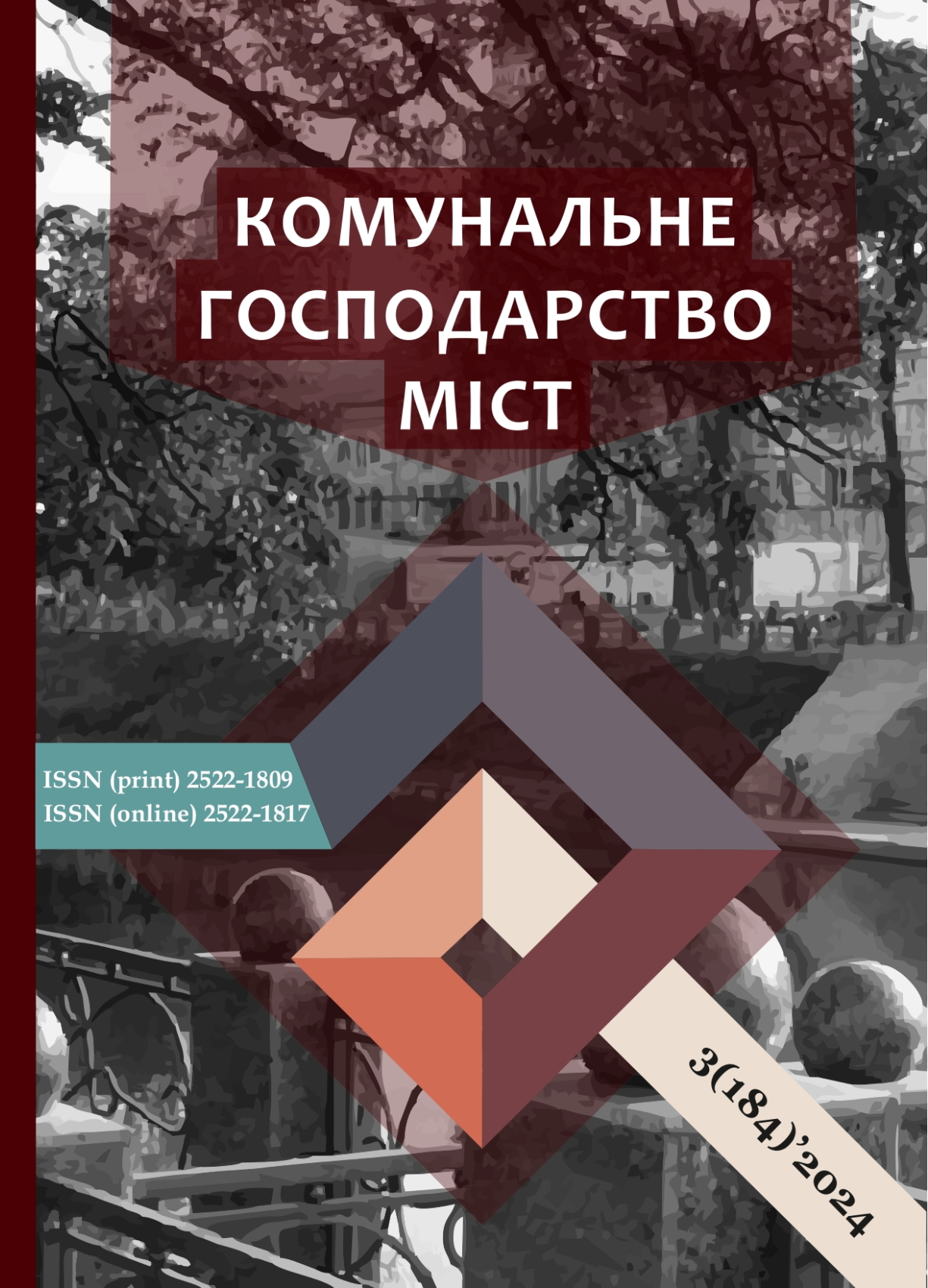DETERMINATION OF THE CLASS B FIRE EXTINGUISHING PARAMETERS USING SPRAYED WATER
DOI:
https://doi.org/10.33042/2522-1809-2024-3-184-179-184Keywords:
fire, fire parameters, sprayed waterAbstract
Sprayed water is a versatile tool for localising and extinguishing fires of various types. When water evaporates, its volume increases by 1700 times, resulting in the dilution of combustible components with non-combustible water vapour.
The study aims to determine the parameters of extinguishing class B fires using sprayed water by obtaining analytical dependencies for these parameters. The paper derives an expression for the extinguishing temperature of class B fires when extinguished with sprayed water, using Semenov’s conditions. The process of liquid combustion is considered as diffusion. The study shows that the extinguishing temperature of this type of fire is a function of the activation energy of the burning liquid and the initial temperature (at the time of sprayed water supply) of the flame. A parameter of this function is the universal gas constant. The authors constructed a graph showing the area of change in the fire extinguishing temperature. The difference between the initial flame temperature and the fire extinguishing temperature belongs to the range of (80÷120) °C.
Using the transition function of class B fire, the study derives an expression for its extinguishing time, which depends on the initial flame temperature, activation energy, and the multiplicative component in the form of a fire time constant. For the relative extinguishing time, the authors constructed the area of change in this parameter depending on the activation energy and the initial temperature. It shows that the value of the extinguishing time of such a fire is (0.28÷0.32) of the value of the constant fire time.
The paper presents an expression for the minimum value of the intensity of the sprayed water supply, which ensures extinguishing a class B fire. This intensity of the supply of sprayed water, reduced to the value of the fire transmission coefficient, is determined by the initial temperature of the flame and the activation energy of the liquid that burns. The authors constructed the area of change of this fire extinguishing parameter. It shows that the minimum value of the intensity of the supply of sprayed water belongs to the range (3.8÷7.8) per unit of the fire transmission coefficient.
References
Paris Firefighters Used This Remote-Controlled Robot to Extinguish the Notre Dame Blaze. Available online: https://spectrum.ieee.org/colossus-the-firefighting-robot-that-helped-save-notre-dame
Firefighter Drones – How Drones are Being Used for Helping Fire Departments. Available online: https://dronenodes.com/firefighter-drones/
Shrigondekar, H., Chowdhury, A. & Prabhu, S.V. Perfor-mance by Various Water Mist Nozzles in Extinguishing Liquid Pool Fires. Fire Technol 57, 2553–2581 (2021). https://doi.org/10.1007/s10694-021-01130-0
Shrigondekar, H., Chowdhury, A. & Prabhu, S.V. Characterization of solid-cone simplex mist nozzles // Fire Safety Journal.2020. Vol. 111. P. 102936.Doi: https://doi.org/10.1016/j.firesaf. 2019.102936.
Experimental investigation on spray characteristics of twin-fluid nozzle for water mist and its heptane pool fire extinguishing performance // Process Safety and Environmental Protection 2021 Vol. 148 P. 724-736. DOI:http://doi.org/10.1016/j.psep.2021.01.037
Liu, T.; Yin, X.-Y.; Liu, Y.-C.; Tang, Y.; Huang, A.-C.; Dong, X.-L.; Liu, Y.-J. Influence of Water Mist Temperature Approach on Fire Extinguishing Effect of Different Pool Fires. Processes 2022, 10,1549. https://doi.org/10.3390/ pr10081549.
Liu Y.,Chen P.Fu .Z, Li J. Sun R., Zhai X. The investigation of the water mist suppression pool fire process’s flame expansion characteristics // Journal of Loss Prevention in the Process Industries.2023. vol. 81. P. 104927. Doi: https://doi.org/10.1016/j.jlp.2022.104927.
Sun X. , Huang H. Zhao J., Song G. 2Experimental Study of the Effect of Slope on the Spread and Burning Characteris-tics of a Continuous Oil Spill Fire // Fire. 2022. Vol.5(4). P. 112. Doi: https://doi.org/10.3390/fire5040112
Ditch B. D., de Ris J.L., Blanchat T. K., Chaos M., Bill R. G., Dorofeev S.B. Pool fires – An empirical correlation // Combustion and Flame. 2013, Vol. 160 (12). P. 2964-2974 Doi: https://doi.org/10.1016/j.combustflame.2013.06.020
Ankit Dasgotra, Goutham Rangarajan, S.M. Tauseef. CFD-based study and analysis on the effectiveness of water mist in interacting pool fire suppression. Process Safety and Environmental Protection. V.152.2021.P.614-629. https://doi.org/10.1016/j.psep.2021.06.033
Kolomiiets V., Abramov Y., Basmanov O., Sobyna V., Sokolov D. Determining the dynamic characteristics of a class b fire in the case of extinguishing by water spray. Eastern-European Journal of Enterprise Technologies. 2023. V. 6/10 (126) DOI: 10.15587/1729-4061.2023.292767
Shevchuk V.H., Polishchuk D.D. Fizychni osnovy pozhezhovybukhonebezpeky. Odesa. 2010. 244 s.
Sharshanov A.Ia., Abramov Yu.O. Zakhyst rechovyn i materialiv vid teplovoho vplyvu pozhezhi za dopomohoiu ekraniv i pokryttiv. Kharkiv. 2023. 280 s.
Kotov A.H. Pozharotushenye y systemy bezopasnosty. Kyev. 2003. 270 s.
Tarakhno O.V. Fizyko-khimichni osnovy vykorystannia vody v pozhezhnii sluzhbi / O.V. Tarakhno, A.Ia. Sharshanov. – Kh.: ATsZU, 2004 – 252 s.
Downloads
Published
How to Cite
Issue
Section
License
The authors who publish in this collection agree with the following terms:
• The authors reserve the right to authorship of their work and give the magazine the right to first publish this work under the terms of license CC BY-NC-ND 4.0 (with the Designation of Authorship - Non-Commercial - Without Derivatives 4.0 International), which allows others to freely distribute the published work with a mandatory reference to the authors of the original work and the first publication of the work in this magazine.
• Authors have the right to make independent extra-exclusive work agreements in the form in which they were published by this magazine (for example, posting work in an electronic repository of an institution or publishing as part of a monograph), provided that the link to the first publication of the work in this journal is maintained. .
• Journal policy allows and encourages the publication of manuscripts on the Internet (for example, in institutions' repositories or on personal websites), both before the publication of this manuscript and during its editorial work, as it contributes to the emergence of productive scientific discussion and positively affects the efficiency and dynamics of the citation of the published work (see The Effect of Open Access).

